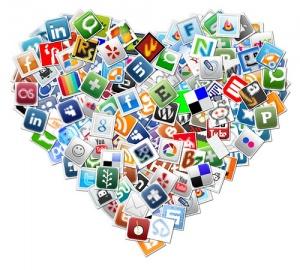As a young twenty-something, social media is something I utilize on a daily basis. I post photos to Facebook, hashtag topics on Twitter, and Pin inspirational quotes to Pintrest. Social media is a way for me, and millions of other people, to brand ourselves and show the public what makes us who we are. The millennial generation is one that has never lived in a world without the Internet or social media, meaning that it will undoubtedly be used in their professional future. Seeing how the Internet has developed from its original Web 1.0 format to its interactive Web 2.0 format in such a short amount of time makes me believe that Web 3.0 will involve a breakthrough in technology that may not even exist yet. Web 2.0 and the existence of social media sites have had a huge impact on social change over the recent years. Because Web 2.0 allows for an interactive and communal environment where forming opinions is encouraged, it is a great platform for raising awareness and social change.
Statistics report that 73% of adults in the U.S. think of social change as something that is personally important to them. While that rather large percentage is great, how many of these 73% have the resources to donate large amounts of money to charity or fly across the world to participate in service first hand? That is where social media comes in to ignite social change. The Internet these days is so widespread and easily accessible that a variety of people are able to participate in movements online, regardless of income level or geographic location. An Internet user does not need to be an expert or specialize in social media in order to get involved in discussion boards or awareness drives. By being user friendly, sites such as Facebook, Twitter, and many others urge everyone and anyone to join. These social media sites create a sense of community because they allow for dialogue between people with the same interests or causes and meaningful connections are formed.
The culmination of these connections can be seen at the Social Good Summit conference, which was held this year in late September. This conference is a three-day meeting where big ideas meet innovative solutions. In the United States, Social Good Summit was held in New York City where thousands of citizens took part. The conference did not remain local, with correspondences in 237 different countries and live tweets, posts, and updates to various social media sites connecting them all through common hashtags. I think Social Good Summit is a testament to my generation of younger people who have chosen to take something that started out as a way to simply connect with Friends, and have used it to spark global conversation. This conference is one of the best examples of how social media is being used in our society to spark social change. It served as a worldwide brainstorm of sorts, to unlock new media for the betterment of the world, and had it not been for social media participation, nowhere near as many people could have participated in the groundbreaking discussions.
In addition to Social Good Summit, the Kony 2012 movement that was sparked earlier this year is an example of how a viral video can be used to raise awareness for the greater good. Kony 2012 was released on March 5th, 2012 as a thirty-minute documentary on YouTube. Invisible Children launched the video to shed light on Joseph Kony and the business he has made out of kidnapping children in Uganda and forcing them to become soldiers. Invisible Children could never have anticipated the impact that this video would have, gaining nearly 90 million hits in only six weeks. How did this video have the ability to reach millions and start another global conversation? Through social media, of course. Many videos on YouTube go unnoticed, but sometimes a select few get enough attention to go viral, and become a major part of pop culture. The context of these videos varies widely from Korean music videos, to videos of a double rainbow in the sky, to a video of a baby laughing on command. However, prior to Kony 2012, not many viral videos were targeted at social change. It really was the first of its kind to gain so much attention while having a meaningful, powerful, cause. Without the social media uproar that was caused by this viral video movement, Invisible Children and their goal to expose Joseph Kony would have been on a much smaller scale.
Critics argue that social media is not the best way to fundraise or make progress on non-profit causes. They claim that people who support a cause online or through social media do not have any direct correlation on the development of that cause. This may be true on a literal level. For example, tweeting about the importance of empowering women is not going to directly cause women to be empowered. But that is hardly a reason to claim that social media does nothing for bettering the world. Social media efforts are a critical part of raising awareness and are responsible for non-profit causes, such as Social Good Summit and Kony 2012, acquiring a presence. The best way to gain support for a cause is to educate the target audience. It’s clear that in this generation, the most efficient and reliable way to do that, is through social media.




Leave a Reply
You must be logged in to post a comment.